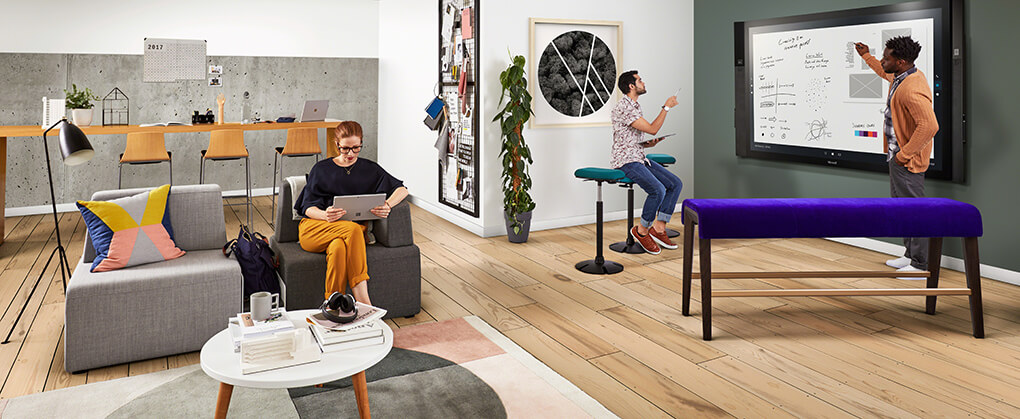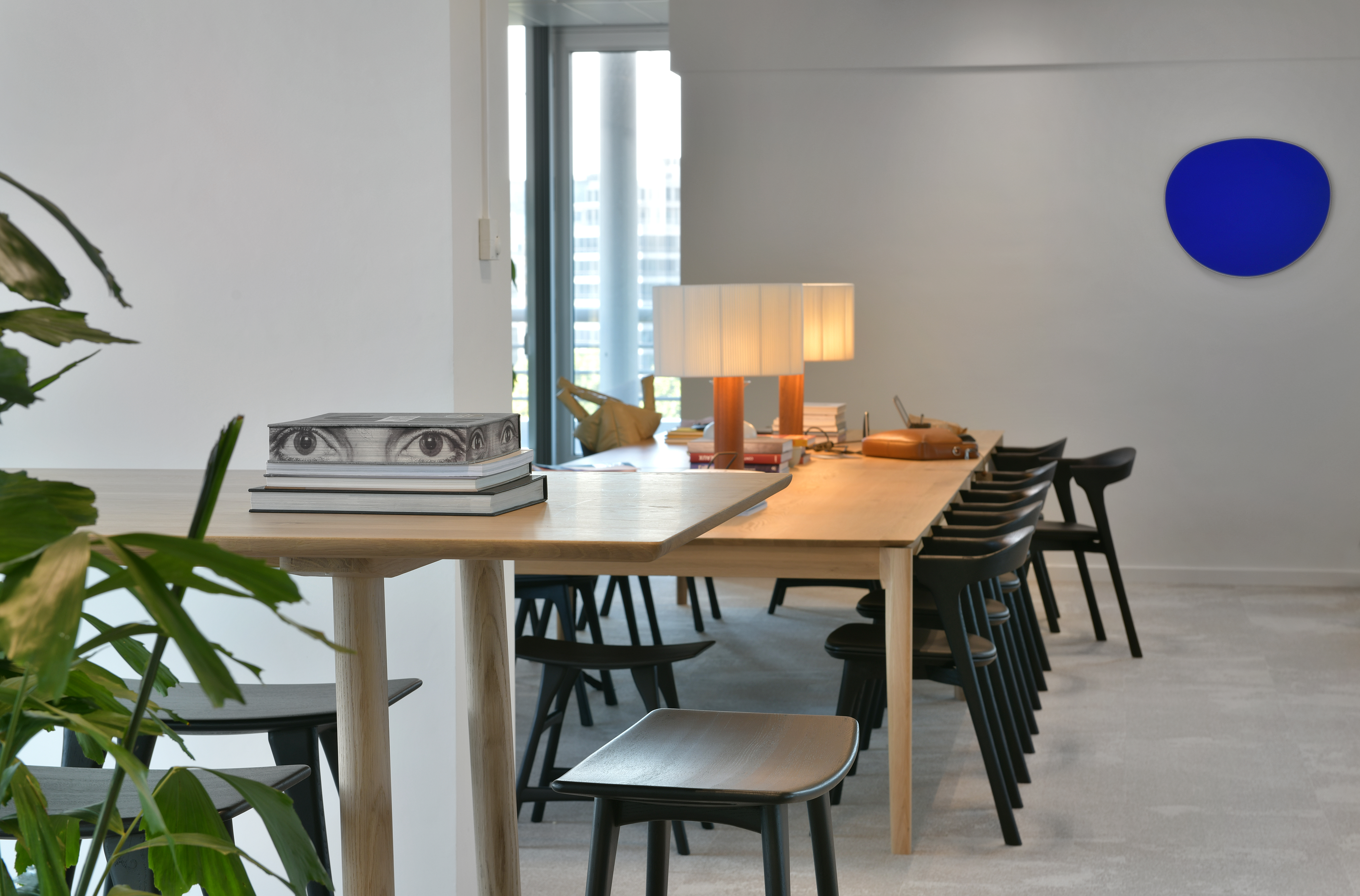Improving Workplace Health:
4 Pillars for a Well-Being-Friendly Environment
In our modern world where work occupies a significant part of our lives, it is imperative to recognize the crucial importance of a healthy and well-being-friendly work environment.
Workplace health extends beyond mere absence of illness, encompassing a state of physical, mental, and social well-being in harmony with the professional environment. To cultivate this balance, we rely on four essential pillars: ergonomics, acoustics, biophilic design, and concentration zones.
1. Ergonomics: A Foundation for Physical Health
Creating an ergonomic work environment is crucial for supporting physical health and preventing musculoskeletal disorders. Consider the following tips:
- Ergonomic Workstations: Provide adjustable chairs and desks that allow employees to customize their seating and working positions. Adjustable height desks enable both sitting and standing positions, promoting movement and reducing the risk of prolonged sitting.
- Proper Seating: Choose chairs that provide lumbar support, adjustable armrests, and comfortable cushioning. Encourage employees to sit with their feet flat on the floor and maintain a relaxed posture.
- Monitor Placement: Ensure computer monitors are positioned at eye level, about an arm’s length away. This helps prevent neck strain and encourages good posture.
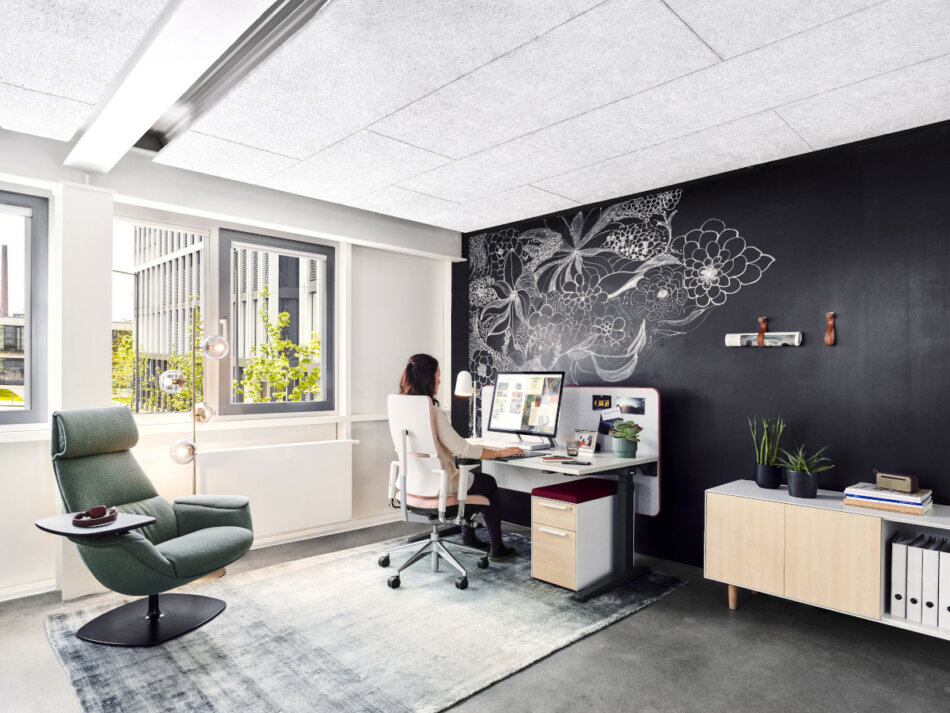
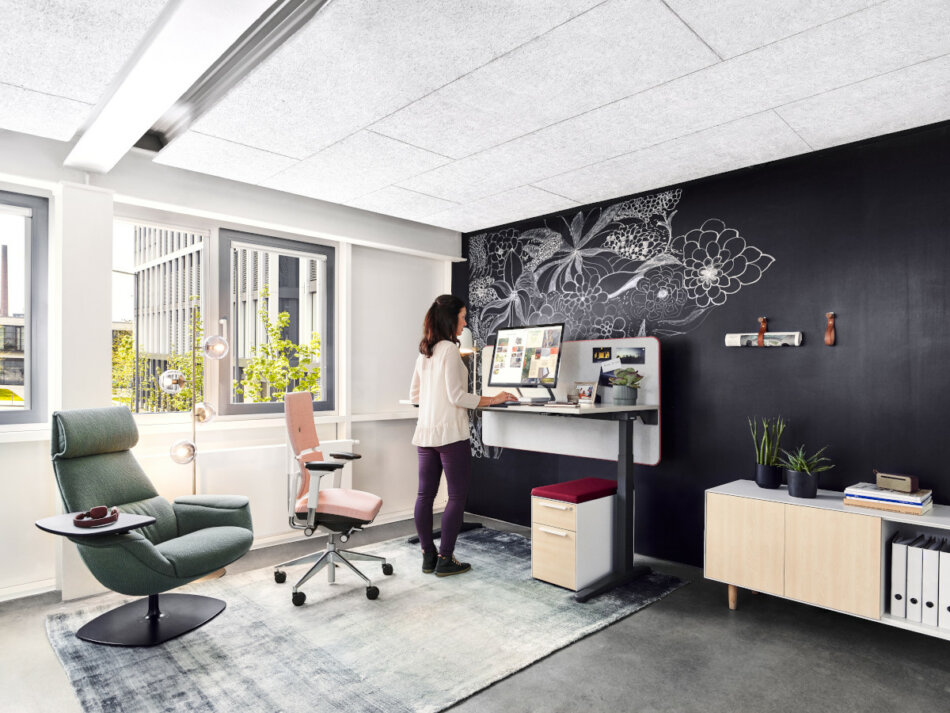
2. Acoustics: Creating a Peaceful and Productive Soundscape
Noise pollution can be detrimental to employee well-being and productivity. Consider the following acoustical design choices:
- Soundproofing Materials: Utilize sound-absorbing materials, such as acoustic panels, carpets, or curtains, to minimize noise reverberation and create a quieter work environment.
- Enclosed Meeting Spaces: Designate enclosed meeting rooms or phone booths to provide employees with quiet spaces for focused conversations or private calls. These spaces can help reduce distractions and enhance concentration.
- White Noise Systems: Install white noise machines or systems that emit soothing background noise to mask distracting sounds and promote a calmer work environment.
3. Biophilic Design: Bringing Nature Indoors
The profound influence of nature on our well-being requires the integration of natural elements in office design. Incorporating elements such as living walls, indoor greenery and captivating outdoor views into workspaces promotes a deep connection with nature, elevates mood, lowers stress levels and cultivates a healthier and more inspiring workspace.
Consider incorporating these elements:
- Indoor Plants: Introduce potted plants and green walls throughout the workspace. Not only do plants improve air quality, but they also create a calming and visually appealing environment.
- Natural Materials: Utilize natural materials like wood, stone, or bamboo in furniture, flooring, and decor. These elements add warmth, texture, and a sense of nature to the workspace.
- Views of Nature: Maximize access to natural light and provide views of outdoor green spaces whenever possible. Position workstations near windows to allow employees to benefit from natural light, which positively affects mood and productivity.
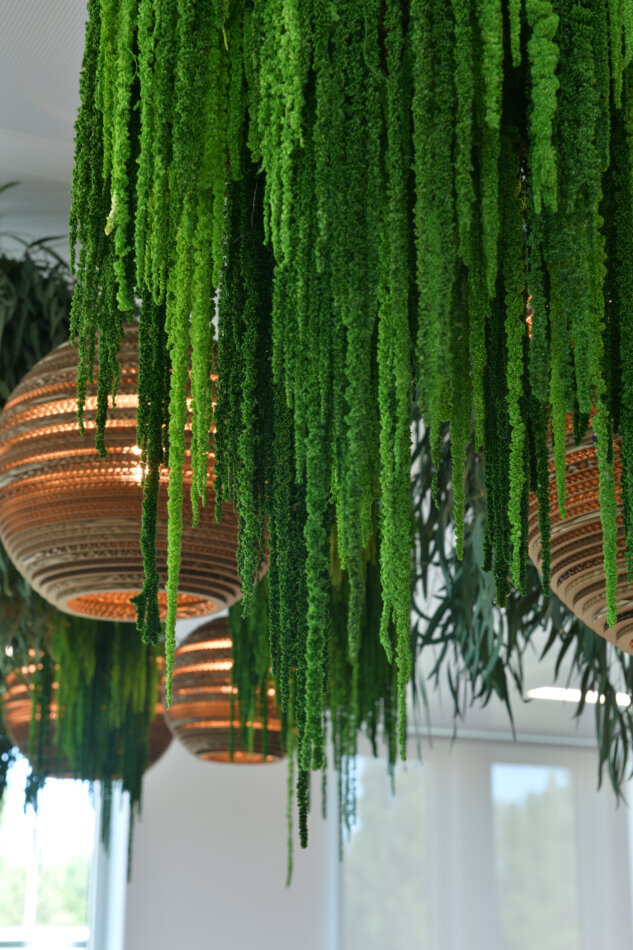
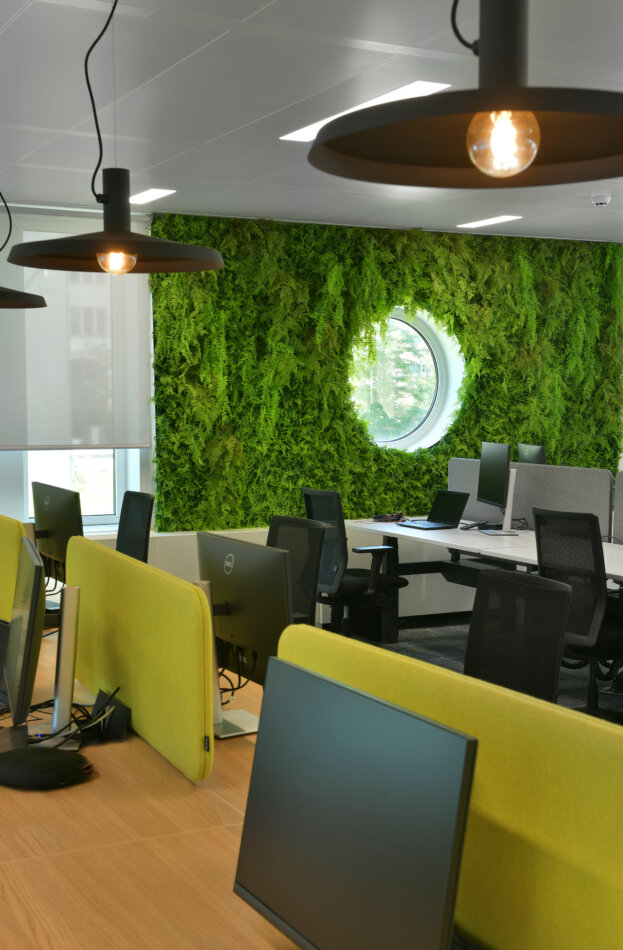
4. Focus Spaces: Designated Areas for Concentration
Creating dedicated spaces for focused work helps employees avoid distractions and supports their mental well-being. Consider the following design strategies:
- Quiet Zones: Establish designated quiet areas where employees can retreat for uninterrupted work or relaxation. Furnish these spaces with comfortable seating, soft lighting, and sound-absorbing materials.
- Cultivate a Focus-Oriented Company Culture: Encourage employees to use dedicated focus spaces when they require uninterrupted time for deep concentration. Promote a culture where colleagues understand and respect the need for quiet and minimal distractions in these spaces. By fostering a focus-oriented company culture, employees will feel supported in their efforts to maintain productivity and concentration, leading to higher levels of task completion and quality output.
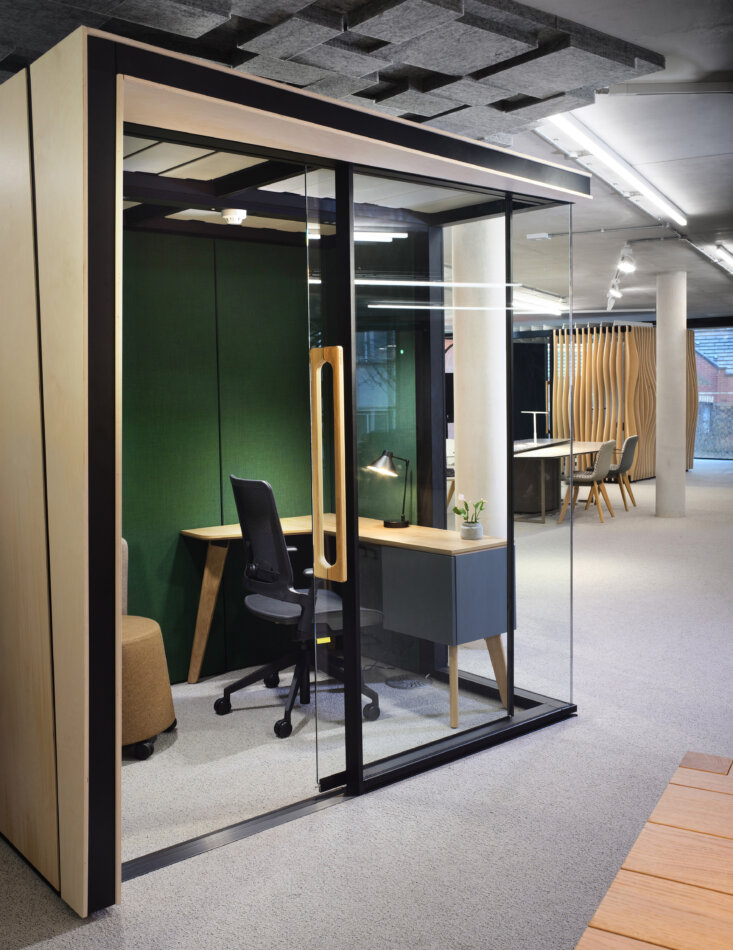
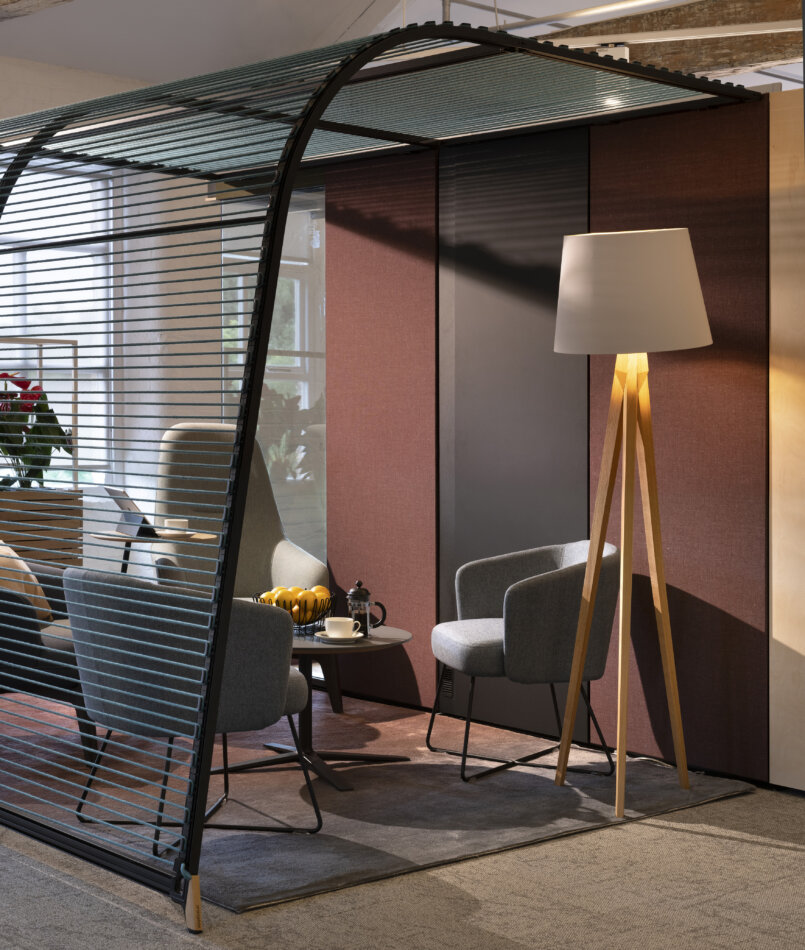
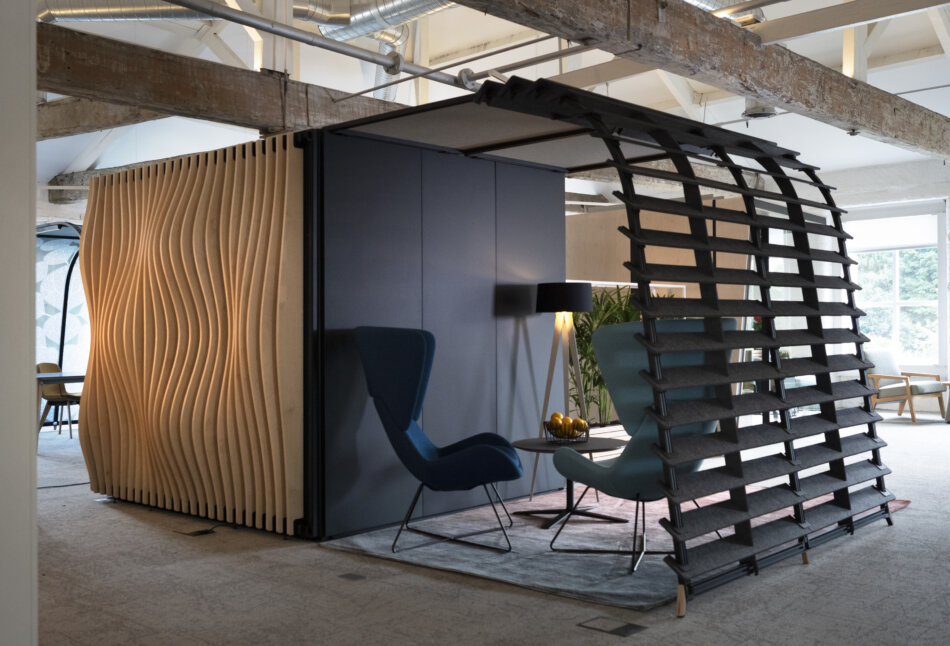
Conclusion
Prioritizing health at work through strategic design choices is essential for creating a thriving and productive workplace. By implementing ergonomic workstations, addressing acoustics, incorporating biophilic design elements, and providing dedicated focus spaces, organizations can enhance employee well-being, satisfaction, and performance. Remember, a healthy work environment is a catalyst for success, and investing in the well-being.
Health into your office?
Find out how customised office design and workplace consultancy services can revolutionise your workplace into a thriving, health-conscious environment!
Do you need help in rethinking your work environment to promote the health of your teams? We can help you



